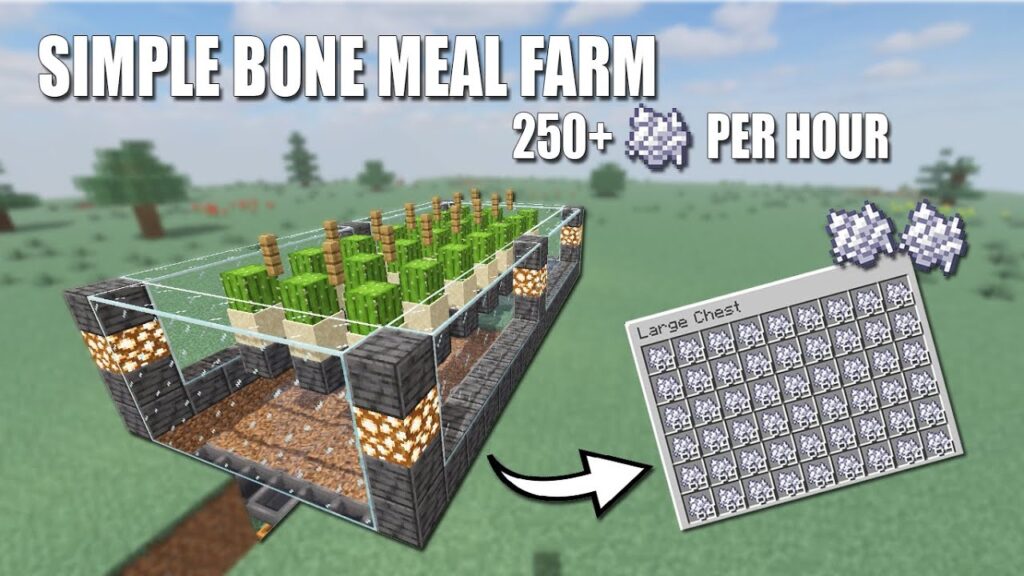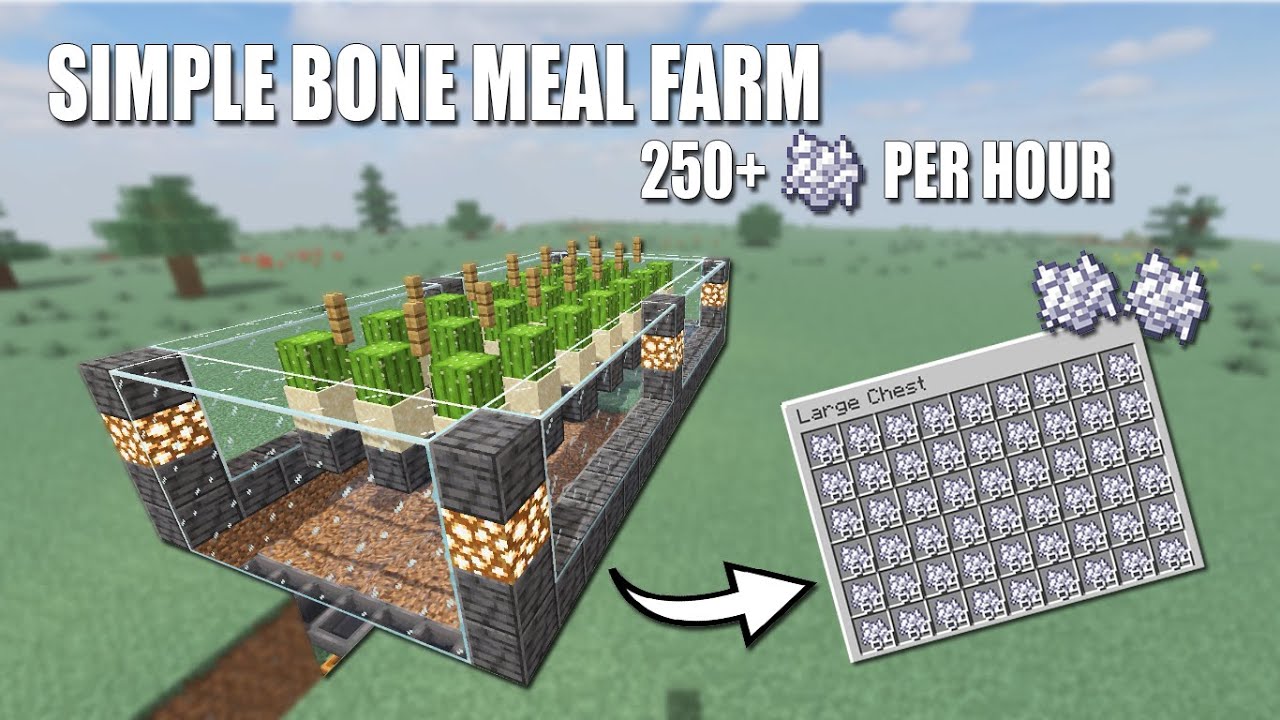
What Are Bones Used for in Minecraft: A Comprehensive Guide
In the expansive, blocky world of Minecraft, players encounter a plethora of items, each with unique uses and functionalities. Among these, bones might seem like a mundane find, particularly when compared to diamonds or enchanted books. However, understanding what are bones used for in Minecraft is crucial for maximizing your gameplay and resource management. This comprehensive guide will delve into the various applications of bones, from taming wolves to crafting bone meal, ensuring you never underestimate the potential of this skeletal resource.
Obtaining Bones in Minecraft
Before exploring the uses of bones, it’s essential to know how to acquire them. Several methods exist for obtaining bones within the game:
- Skeletons: The primary source of bones is, unsurprisingly, skeletons. These hostile mobs spawn in dimly lit areas and drop 0-2 bones upon defeat. Increasing your Looting enchantment on your sword can increase the number of bones dropped.
- Stray: A variant of the skeleton found in snowy biomes, strays also drop bones when defeated.
- Wither Skeletons: Found in Nether fortresses, wither skeletons are a more challenging mob but also drop bones, along with wither skeleton skulls.
- Fishing: While less reliable, bones can occasionally be obtained as treasure while fishing. This method is less efficient but can provide bones in a pinch.
- Chests: Bones can sometimes be found in chests located in various structures, such as dungeons, temples, and woodland mansions.
The Primary Uses of Bones
Now that you know how to collect bones, let’s explore their practical applications in Minecraft.
Taming Wolves
One of the most well-known uses for bones is taming wolves. Wolves, found in forest and taiga biomes, can be tamed by feeding them bones. The number of bones required varies, but once tamed, the wolf becomes a loyal companion, following you and attacking hostile mobs. A tamed wolf’s health can be restored by feeding it meat. Taming wolves is a significant advantage, especially when exploring dangerous areas. Remember to keep your wolves safe and healthy, as they can be valuable allies. If you’re wondering what are bones used for in Minecraft beyond basic taming, keep reading.
Crafting Bone Meal
Perhaps the most versatile use of bones is crafting bone meal. Bone meal is created by placing a bone in any crafting grid. This simple process transforms a single bone into three units of bone meal. Bone meal has several important applications:
- Fertilizing Crops: Bone meal can be used to instantly grow crops. Applying bone meal to wheat, carrots, potatoes, beetroots, and other plants will accelerate their growth cycle, allowing for faster and more efficient farming. This is particularly useful for quickly replenishing food supplies.
- Growing Trees: Bone meal can also be used to grow trees instantly. This is especially helpful when you need wood quickly or are establishing a tree farm. Different tree types may require multiple applications of bone meal.
- Creating Flowers: Applying bone meal to grass blocks can generate flowers. The type of flowers that appear is dependent on the biome. This is a great way to decorate your base and obtain dyes.
- Dyeing: Bone meal acts as a white dye. It can be used to dye wool, concrete powder, and other items white. This is useful for creating custom designs and patterns.
Taming Cats
While fish are the primary food used to tame cats, bones play a role in the process. Specifically, if you have a skeleton farm that provides a surplus of bones, converting them to bone meal can help you grow crops to attract ocelots (which can be tamed into cats using fish). Although not a direct use, it indirectly supports cat taming. Understanding what are bones used for in Minecraft extends beyond immediate actions to include supporting other game mechanics.
Trading with Wandering Traders
Wandering Traders, who randomly appear near players, occasionally offer trades involving bone meal. While not a consistent source of valuable items, it’s worth checking their trades to see if they offer anything useful in exchange for bone meal, which is easily crafted from bones. This can be a convenient way to offload excess bones for other resources.
Using Bones in Automatic Farms
Experienced Minecraft players often create automatic farms to efficiently gather resources. Bones can be integrated into these farms to automate the production of bone meal. For example, a skeleton farm can be combined with a composter system to automatically convert bones into bone meal, which can then be used to fertilize crops in an adjacent farm. This setup provides a steady supply of food and resources with minimal player intervention. Understanding what are bones used for in Minecraft is key to optimizing these automated systems.
Crafting White Dye
As mentioned earlier, bone meal created from bones can be used as white dye. This dye is essential for crafting various colored blocks, wool, and glass panes. White is a versatile color used in many building designs, making bones a valuable resource for builders and decorators.
Advanced Bone Uses and Tips
Beyond the basic uses, bones and bone meal have some less obvious but equally useful applications:
Creating Concrete
Concrete is a popular building material due to its solid, unyielding nature. To create concrete, you first need to craft concrete powder using sand, gravel, and dye (including white dye made from bone meal). When concrete powder comes into contact with water, it hardens into concrete. Therefore, bones indirectly contribute to concrete production through the creation of bone meal and white dye.
Growing Giant Mushrooms
Giant mushrooms can be grown by applying bone meal to mushroom blocks. This is a useful way to obtain large quantities of mushrooms for food or decoration. Giant mushrooms can be found in dark forests or mushroom fields, and bone meal helps to cultivate them quickly.
Using Bone Meal in Composting
Composters are blocks that turn organic materials into bone meal. While you can’t directly put bones into a composter, you *can* put plants grown using bone meal into a composter. This creates a cycle: bones -> bone meal -> plants -> composter -> more bone meal. This is an efficient way to generate bone meal from excess plant matter.
Decorating with Bone Blocks
Bone blocks, crafted from nine bone meal, can be used for decoration or as a building material. They have a unique texture and can be oriented in different directions, allowing for creative building designs. While not as structurally strong as other blocks, bone blocks add a distinctive aesthetic to any build. [See also: Minecraft Building Tips and Tricks]
Why Understanding Bone Uses is Important
Understanding what are bones used for in Minecraft is essential for several reasons:
- Resource Management: Knowing the various uses of bones helps you prioritize and manage your resources effectively. Instead of discarding them, you can utilize them for farming, taming, or crafting.
- Efficiency: Utilizing bones and bone meal can significantly increase your efficiency in various tasks, such as farming and building.
- Survival: In survival mode, having a reliable source of bone meal can be crucial for quickly growing food and replenishing your supplies.
- Creativity: Bone meal and bone blocks offer creative possibilities for building and decorating, allowing you to express your unique style in the game.
Conclusion
In conclusion, bones are a surprisingly versatile resource in Minecraft, with applications ranging from taming wolves to fertilizing crops and crafting dyes. Understanding what are bones used for in Minecraft can significantly enhance your gameplay, improve your resource management, and unlock new creative possibilities. So, the next time you encounter a skeleton, remember that its bones are more valuable than they might initially seem. Embrace the potential of this skeletal resource and elevate your Minecraft experience. Don’t underestimate the power of a simple bone!

